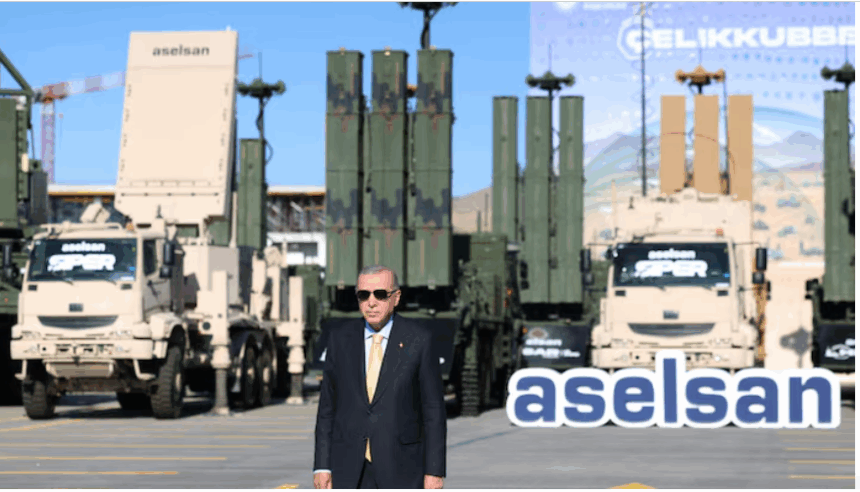Turkey moved on two fronts this week to tighten both military and civilian resilience, unveiling fresh deliveries for its multilayered “Steel Dome” air-defense architecture while advancing a cabinet-backed plan to build modern public shelters across all 81 provinces.
At ASELSAN’s Ankara campus on Wednesday, President Recep Tayyip Erdoğan presided over deliveries that will slot into the integrated network, including 47 “Sky Dome” vehicles with a stated value of $460 million. He cast the milestone as evidence of a broader shift toward indigenous capabilities and a denser protective umbrella over national airspace. Independent coverage described the event as part of the official unveiling of “Steel Dome,” with authorities reiterating that timelines for full operational integration would be phased.
The ceremony also marked the groundbreaking of ASELSAN’s Oğulbey Technology Base, a $1.5 billion complex that Erdoğan described as the largest single defense-industry investment to date in Turkey, aimed at more than doubling mass-production capacity. Reuters reported that the site is billed as Europe’s biggest integrated air-defense facility, with the first phase expected to be commissioned by mid-2026.
Company and local press accounts said the day’s deliveries and announcements spanned multiple layers and supporting sensors: HİSAR O-100 and SİPER air-defense systems, ALP 300-G/100-G early-warning radars, PUHU and REDET electronic-warfare suites, and KORKUT short-range vehicles. Officials again described Steel Dome as a “system of systems” that fuses radars, electro-optics, communications, and command-and-control to counter low-, medium-, and high-altitude threats. The event coincided with the opening of 14 ASELSAN facilities that, according to the company’s leadership, will lift capacity about 40% and add several thousand jobs.
In parallel, broadcaster NTV reported that the cabinet has approved a nationwide program for state housing agency TOKİ to construct quickly accessible civil-defense shelters in every province, with initial works underway in Ankara and other cities. The decision followed a study by the Ministry of Environment, Urbanization and Climate Change that flagged gaps in the country’s shelter stock and benchmarked models from Israel, Japan, and Switzerland.
The shelter initiative also highlights a long-standing compliance problem. Turkey’s Shelter Regulation, in force since the late 1980s, requires shelters in buildings above set thresholds, but many designated spaces in apartment projects have been repurposed as parking or storage. The 1988 Official Gazette text remains the core framework for specifications and use.
Viewed together, the announcements underscore a dual track: accelerating a homegrown air-defense ecosystem through incremental deliveries and new industrial capacity, while launching a civil-protection build-out meant to standardize access to hardened spaces in the event of conflict or disaster. Analysts note that the key unknowns are implementation details — notably how rapidly Steel Dome’s layers are networked into a single command architecture, and how soon provinces see funded, code-compliant shelters coming online beyond pilot sites. For now, officials frame both efforts as moves to reduce foreign dependence and to harden critical infrastructure amid a volatile regional environment.





